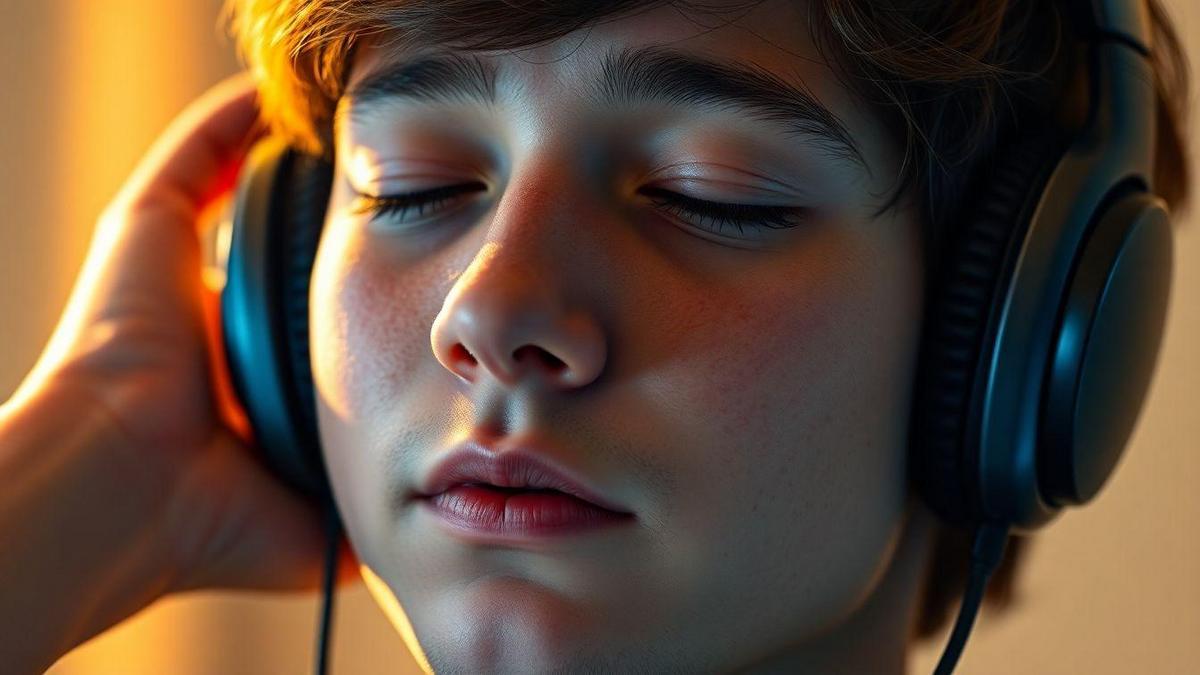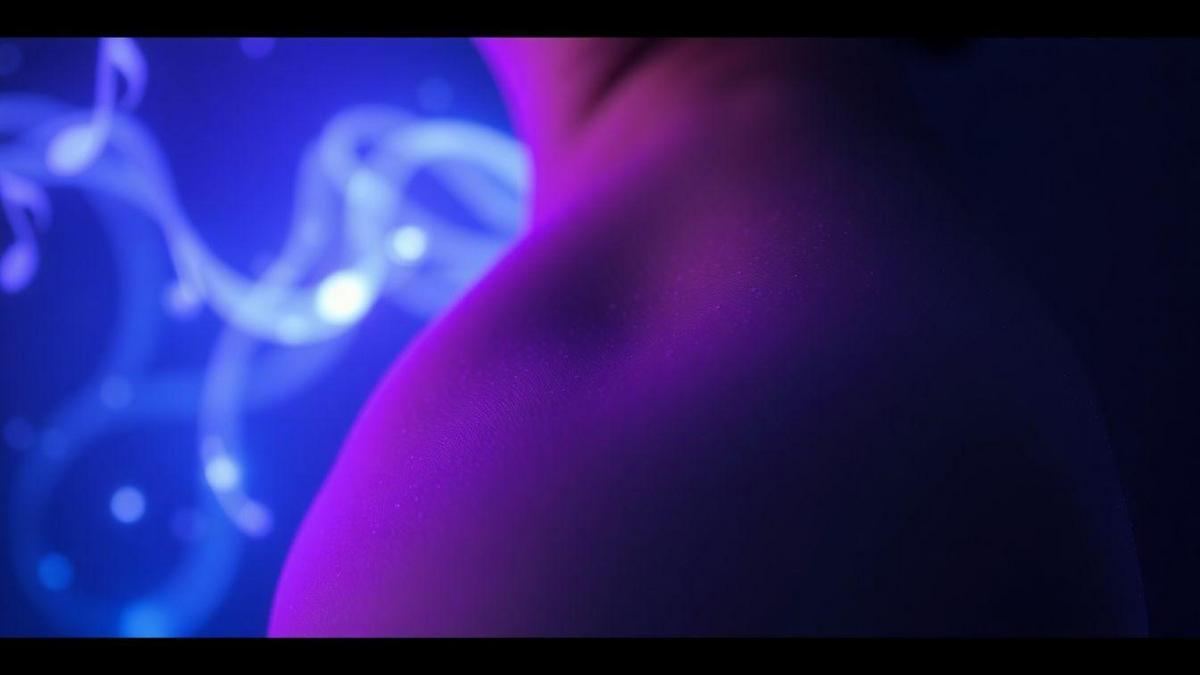Why do some songs give us goosebumps?
I want to explain how my brain and body turn a single note into a shiver. I’ll cover prediction, surprise, dopamine, the tiny tricks in timbre, silence, and sudden dynamic shifts, plus why memory and live concerts amplify the effect. Along the way I answer the question: Why do some songs give us goosebumps?
Key takeaway
- Chills arrive when a song creates a big, unexpected moment.
- Memory links make a moment feel larger.
- Certain voices, close harmonies, and timbral textures trigger skin pricks.
- Matching music and mood calms or charges the body.
- Dopamine rewards anticipation and peak moments.

How my brain makes music feel like a shiver
Brain mechanisms in plain words
My brain listens and builds a map — predictions about what will come next. When the music breaks that map in a pleasing way, surprise and reward fire together. That mix is the shiver. For classic fMRI evidence linking music-induced chills to reward and emotion brain regions, see Brain regions linked to music chills.
Key players:
| Brain area | Plain role | How it links to chills |
|---|---|---|
| Auditory cortex | Processes sound | Detects patterns and sets expectations |
| Nucleus accumbens | Reward center | Lights up when music feels pleasurable |
| Amygdala | Emotion tagging | Adds urgency or awe |
| Anterior cingulate (ACC) | Attention tracker | Flags important changes |
| Insula | Body-sense | Turns brain signals into skin sensation |
When these systems talk, my skin tightens, my breath shifts — that physical pulse is the shiver.
Dopamine and music chills: why I feel rewarded
When a song builds and then lands, my brain releases dopamine. I feel it as warmth, excitement, or a burst of joy. Dopamine shows up twice:
- Anticipation — I tense as music builds.
- Peak — I’m rewarded when the chord, note, or voice lands.
This two-stage dopamine pattern is supported by research demonstrating distinct dopamine release during anticipation and peak musical moments — see Dopamine release during musical reward. That’s why I replay clips that gave me chills: my brain learned the pattern and seeks the reward again. Learning how to shape those moments helps — for example, techniques for adding feeling to a phrase are covered in resources like how to add emotion to every note.
Why do some songs give us goosebumps? — the nervous spark
A song can combine a few sharp ingredients that “spark” my nervous system. That spark is brief and bright — it means the music mattered.
| Musical trigger | Why it sparks a reaction |
|---|---|
| Sudden quiet | Silence focuses attention; the next sound feels huge |
| Unexpected harmony | Breaks prediction; brain says wow — understanding basic chord movement can make these surprises clearer (see what chords are and why they matter) |
| Powerful vocal timbre | Feels like an intimate human voice |
| Memory link | Ties sound to a person or moment |
| Large dynamic change | Loud after soft feels like a jump-scare in a good way |
A violin swell behind a simple melody once stopped my breath. That one small shift created a big reaction.
The sounds and tricks that trigger frisson
Sudden change, silence, tension → release
I get chills when music shifts suddenly: soft verse to loud chorus, a held tension that resolves, or a single second of silence before a big note. Those contrast moves make the next sound mean more.
| Trigger | What I hear | Effect |
|---|---|---|
| Sudden loudness | Full band, crashing drums | Instant shock, quick chills |
| Silence then sound | One beat quiet, then a note | Heightened focus, big payoff |
| Tension → release | Dissonant to stable chord | Emotional relief, warm shiver |
Timbre and harmony
Timbre (sound color) matters. A breathy voice, a scraped bow, or a raw vocal tone can make my spine tingle. Close harmonies and small clashes create a fine buzz that resolves into warmth. If you want to make these textures more visible, learning to read chord voicings and sheet music can help; see how to read chords and sheet music. For a concise, authoritative explanation of timbre and sound color, read How timbre and sound color work.
- Bright timbre (trumpet, high voice) = heroic feeling.
- Dark timbre (cello, low voice) = intimacy or sadness.
- Close harmony = a thrilling micro-clash.
How composers use these tricks
Composers shape emotion with dynamics, silence, instrument color, and a single dissonant note that begs for release. Film scores and pop hooks use these moves on purpose: harp glissandi, choir swells, sudden key shifts, or a late entry that creates a tiny surprise. If theory feels intimidating, start small — is music theory really that scary? walks through practical ways songwriters use these devices.
Why memories amplify chills
When a familiar song opens a door to a face, place, or past moment, the emotional impact doubles. Music and memory share brain pathways, so a chord can trigger a vivid scene. That overlap is also why music can help clear the mind and support wellbeing — read more about the mental benefits in music as therapy: how playing clears mind.
| Trigger | Example | Reaction |
|---|---|---|
| Person | A song my sister loved | Smile and tears |
| Place | Street music from college | Smell the rain, feel small |
| Event | A wedding song | Chest tightens, slow breath |
Why do some songs give us goosebumps when memory returns? Recognition plus feeling. The familiar note sparks a memory; the emotional flood combined with surprise produces a physical response — goosebumps.
Shared live moments and crowds
Singing or listening together creates a shared heartbeat. When everyone focuses, attention amplifies emotion. That social feedback loop can turn a good song into a spine-tingling event. A clear public-science overview explains why music gives people chills, including how social and memory factors boost the effect.
What I notice in crowds:
- Breathing syncs with others.
- Visual cues (lights, faces) amplify emotion.
- Collective reaction validates feeling and unlocks vulnerability.
Live performance often hits harder than a recording because of that shared intensity.
Why improvisation surprises me and gives me chills
Improvisation is living music — risk, surprise, and fragile choices. A bent note, a delayed beat, or a sudden silence breaks my prediction and wakes my ears.
| Trigger | What I feel | Why it hits |
|---|---|---|
| Sudden tempo shift | Rush or pause | Predictive model broken |
| Odd interval | Goosebumps | Familiar yet strange contrast |
| Empty space | Anticipation | Silence makes the next sound heavier |
On stage, a glance or breath starts something new. Those real-time choices land hard because they are unique to that moment.
How my body reacts automatically
Autonomic response and the skin
The autonomic nervous system controls sweat, tiny hairs, and goosebumps. When the music hits, my body can react before I think: skin prickles, eyes water, heart rate shifts.
Common triggers I notice:
- Surprise in melody.
- A big or sudden chord.
- A personal memory the song unlocks.
| Trigger | Skin reaction |
|---|---|
| Sudden harmony or loud swell | Goosebumps, hair stands up |
| Emotional memory | Warm flush, mild sweat |
| Soft, close voice | Tiny shivers along skin |
Heart rate and breath
Calm music slows breath and steadies the heart; exciting music speeds them up and often brings chills. Chills are the body saying, pay attention.
What research tells me about musical frisson
Brain imaging links auditory areas to reward and emotion centers during chills. Lab measures (skin conductance, heart rate, fMRI) show a consistent pattern: prediction → surprise → reward.
| Brain area | Role |
|---|---|
| Auditory cortex | Detects the change |
| Nucleus accumbens | Releases dopamine (reward) |
| Insula & ACC | Link sound to bodily feeling |
| Autonomic system | Produces skin response |
Evidence on dopamine: studies show dopamine spikes in the nucleus accumbens during peak musical moments — matching the warm rush I feel.
Lab findings that map to experience:
- Dynamic jumps and harmonic surprises raise skin conductance.
- Withheld resolution increases tension; resolution often produces chills.
- Personal memory and live context boost the chance of frisson.
Expectation, training, and listening habits
My expectation is a roadmap. When music follows it, I feel comfort. When it detours, I sit up. Training my ear made these detours more visible and more moving.
| Trigger | What I notice | Reaction |
|---|---|---|
| Predictable pattern | Repeats expected chord | Comfort |
| Small surprise | Tiny dissonance or late beat | Mild chill |
| Big surprise | Key change or silence | Strong goosebumps, tears |
The more I listen and learn, the sharper my anticipation — and the more rewarding a deliberate surprise becomes. If you’re building that ear, practical training pieces like the power of just twenty minutes daily and how to create a simple practice routine show how consistent listening and practice sharpen expectation.
How I use music to grow, build confidence, and invite goosebumps
I practice intentionally to understand and recreate the moments that move me.
Practice habits:
- Write one short melody daily.
- Improvise, record, and pick one moment to study.
- Slow down a chill moment, find the exact chord or silence, and repeat it.
- Journal one line after an emotional listen.
| Action | Skill gained | Result |
|---|---|---|
| Daily 5-min melody | Phrasing, ear | Small wins add up |
| Record improv | Risk-taking | Fewer stage fears |
| Recreate chills | Structural understanding | More control in performance |
My routine: listen for feeling, mark the timestamp, analyze the structure, practice the moment slowly, record and compare. That curiosity turned sudden chills into tools for creativity and growth. If you’re just starting or stuck, pieces on overcoming hesitation and building habits can help — see overcoming the fear of starting music, how to stop procrastinating on music practice, and the discussion of talent versus steady work in talent vs practice: can anyone learn music?. If you need an instrument to start with, check options like 5 affordable instruments perfect for beginners and advice on selecting one in how to choose your first instrument without regrets.
Conclusion
I keep coming back to a simple formula: surprise meaning = chills. My brain predicts; when music takes a sharp turn, a small alarm and a warm reward — dopamine — light up. Sound color (timbre), silence, close harmony, and live togetherness amplify the effect. Memory doubles the impact. The body reacts first — heart, breath, skin — and the mind follows with meaning.
Why do some songs give us goosebumps? Because a well-crafted musical moment interrupts expectation at the same time it connects to something that matters. When that interruption is paired with personal meaning or shared attention, my skin pricks and I feel the full charge of the moment.
If you want to chase more of these moments with me, explore ClickNeutro.
FAQ — Why do some songs give us goosebumps?
- Short answer: because music can break a prediction in a pleasing way while also tapping emotion or memory. That combo triggers reward systems and an automatic bodily response — goosebumps.

888starz – известных онлайн-казино, которое предлагает. это заведение. и интересные акции.
Игроки в 888starz, предлагаемых на платформе. разработана и обладает и увлекательным сюжетом. платформа предлагает и карточные игры, что придаёт.
Важным аспектом. Казино и вывода средств, что удобным и быстрым. Все транзакции, что гарантирует.
для пользователей. В 888starz, которая готова помочь. с ними и развернутые ответы. Таким образом, предлагает.
888stars uzbekistan https://888starz2.ru/